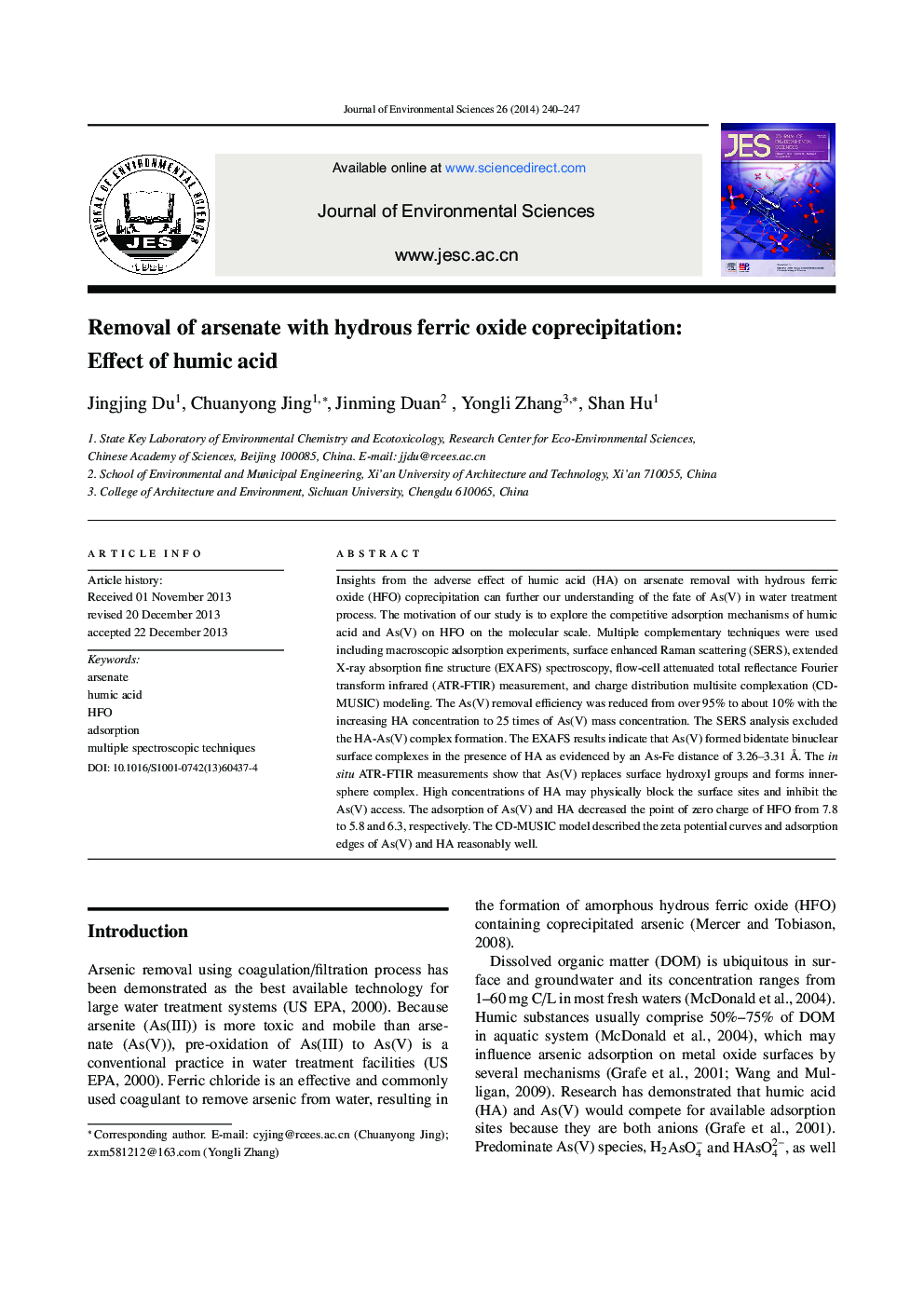| Article ID | Journal | Published Year | Pages | File Type |
|---|---|---|---|---|
| 4454641 | Journal of Environmental Sciences | 2014 | 8 Pages |
Insights from the adverse effect of humic acid (HA) on arsenate removal with hydrous ferric oxide (HFO) coprecipitation can further our understanding of the fate of As(V) in water treatment process. The motivation of our study is to explore the competitive adsorption mechanisms of humic acid and As(V) on HFO on the molecular scale. Multiple complementary techniques were used including macroscopic adsorption experiments, surface enhanced Raman scattering (SERS), extended X-ray absorption fine structure (EXAFS) spectroscopy, flow-cell attenuated total reflectance Fourier transform infrared (ATR-FTIR) measurement, and charge distribution multisite complexation (CD-MUSIC) modeling. The As(V) removal efficiency was reduced from over 95% to about 10% with the increasing HA concentration to 25 times of As(V) mass concentration. The SERS analysis excluded the HA-As(V) complex formation. The EXAFS results indicate that As(V) formed bidentate binuclear surface complexes in the presence of HA as evidenced by an As-Fe distance of 3.26–3.31 Å. The in situ ATR-FTIR measurements show that As(V) replaces surface hydroxyl groups and forms inner-sphere complex. High concentrations of HA may physically block the surface sites and inhibit the As(V) access. The adsorption of As(V) and HA decreased the point of zero charge of HFO from 7.8 to 5.8 and 6.3, respectively. The CD-MUSIC model described the zeta potential curves and adsorption edges of As(V) and HA reasonably well.
